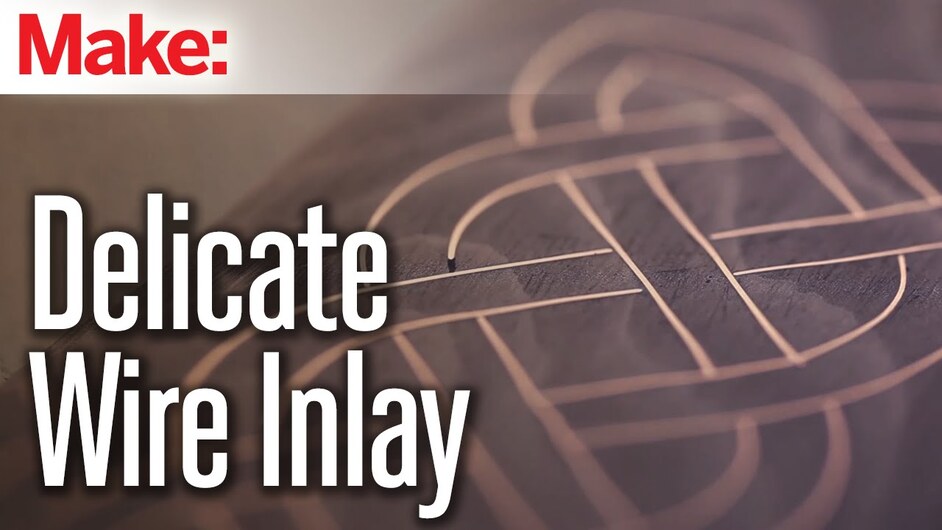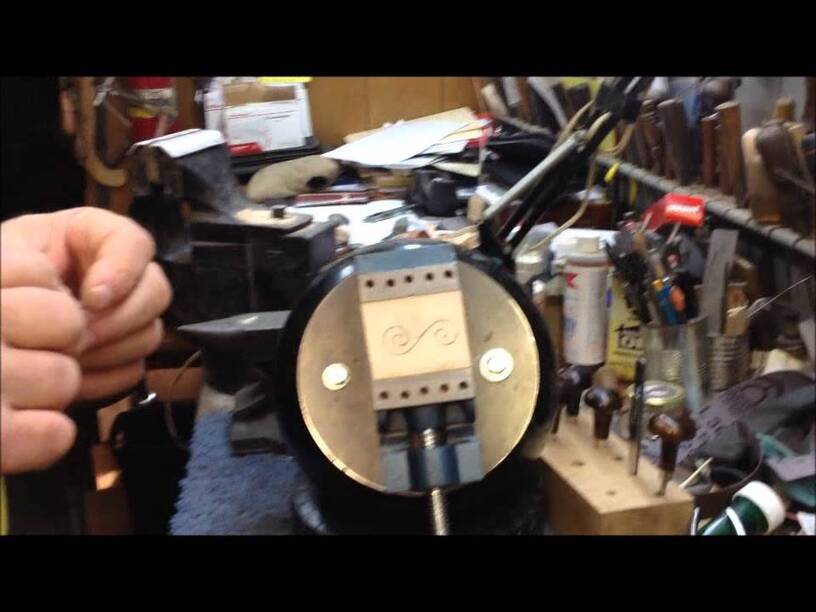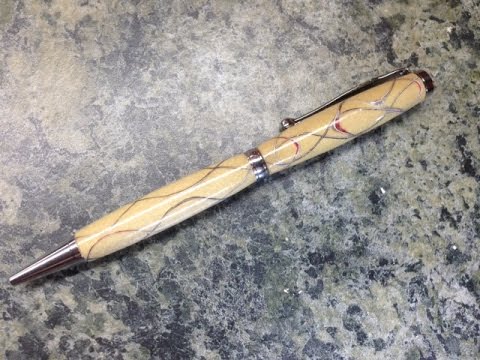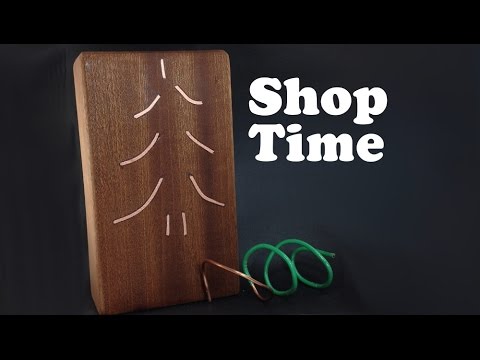I have been spending a bit of time browsing Make videos. Here is a good example of wire inlay, using Celtic knotting for the pattern. The heavy duty roller press used to flatten the wire is a neat tool. I know there are gunsmiths, bladesmiths, woodworkers and jewelers who have done this. It seems that cutting the chase for the wire to go into might be good with a Glowforge. Not sure about kerf requirements and depth.
Guessing that wire was no smaller than 16 guage, about .05". After rolling might be half that thick. The Kerf and depth shouldn’t be a problem.
Really beautiful! I love this idea, and I’d never heard of it. Thanks for posting!
While the roller would be very helpful, it’s a fairly costly piece of equipment. When I’ve needed fairly flat stripes of copper, brass or silver for other metal work, I’ve simply annealed the wire with a torch and hammered it flat and to the thickness I needed,
This looks like a great project to be done with hand tools with fantastic results.
Thanks for sharing!
The folks at make do a good job of producing interesting videos, but sometimes the techniques they recommend are a bit “dumbed down”. Not that you can’t get good results, just that they are trying hard to provide an easy and accessible way of doing something that is hard to do.
Personally, I think it is worth seeing how a trained craftsperson does something, and then you can choose to cut whatever corners you wish.
This person is a master, and he shows you how to use tools you can make yourself. The videos are not as slick, but the information is very high quality.
Awesome!
Thank you for posting this. The bowling ball vice is worth the trip. Very clear videos.
Never thought you could make something so nice so simply.
I am not sure I have the patience to do this without a printer. Please ship my Glow, so I can get started. I have so many gifts and projects to make. Celtic knots on wood is at the top of the list.
So cool! Here I’m thinking of all this crazy stuff you can do with a Glowforge and you show us videos like this that suddenly open-up a whole other world of options! Thanks for sharing.
Above reminded me of this video:
Using tin cans for a similar inlay technique. But probably won’t be applicable to us.
I tried using a 60 deg v bit and using just regular wire from the hardware store to achieve a similar look. It did not work out as well. I think flattening the wire may of helped me more.
If you can’t flatten the wire, if you don’t Inlay more then the diameter, you might be able to get away with it, maybe.
Paul brown from Shop time:
Not as delicate
Sped up hammering sounds are the most hilarious thing to me.
I wonder what it would look like if you left the wires insulation on?
Steal that copper edge from a wooden ruler. It’s pretty flat, and copper. Wonder if you can buy that in bulk some place.
As long as you are using glue that might work. There used to be a huge assortment of fancy colored wires inside the trunk sized phone cables, not sure if that is still available.
If you are willing to put even a little bit of time into it, then as @Just-Maken-It points out, a hammer will get you flat wire very easily. You don’t even need to anneal it if it is copper, just peel off the insulation and gently hammer it as consistently as you can. The hammering will work harden the metal though. If you are going to try and make tight bends after hammering then a quick heat to dull red with a propane torch will make it nice and soft again.
I have lots of these kicken around  they are metal versions of zip ties or tie wraps very thin stainless steal could be perfect for this. Get uber detail and a perfectly consistent width. I use these for making bands for my rc car to stop the tires from expanding into dinner plates.
they are metal versions of zip ties or tie wraps very thin stainless steal could be perfect for this. Get uber detail and a perfectly consistent width. I use these for making bands for my rc car to stop the tires from expanding into dinner plates.
I have been practicing copper wire inlay into black walnut and it has a unique learning curve but what the heck I don’t have my Glowforge yet so this is the way to pass the time and become familiar with the technique. I have attached some work that have practiced on and I know they are crude but I have to learn.
It’s probably excessive, but you can also get copper sheet and snip very carefully and then smooth. I’ve done some contacts and heat spreaders and bits with that.
Those look great!
I think you are getting quite good at it.
You should try some sterling silver wire, it is really not that expensive in that gauge, and it would contrast nicely with the walnut.
I want to give that a try, I have a Pepe Tools rolling mill so I can flatten copper and maybe get some good results







